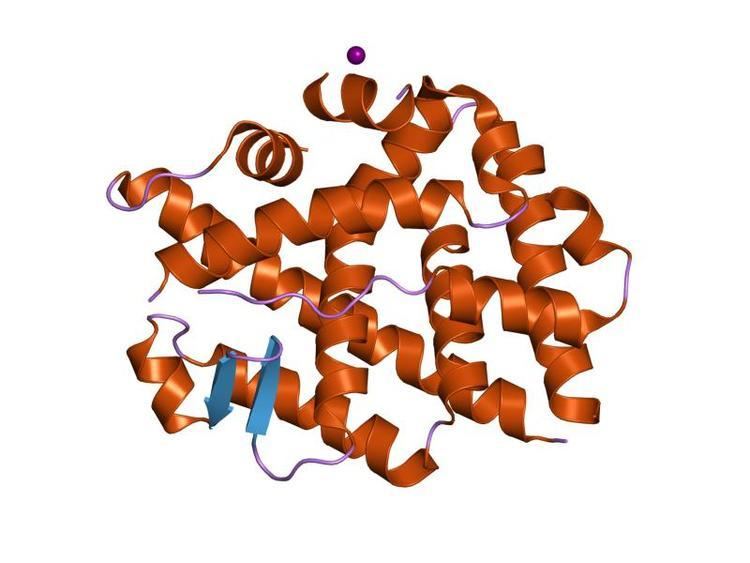Species Human Entrez 10891 | Human Mouse Ensembl ENSG00000109819 | |
 | ||
Aliases PPARGC1A, LEM6, PGC-1(alpha), PGC-1v, PGC1, PGC1A, PPARGC1, PGC-1alpha, PPARG coactivator 1 alpha External IDs MGI: 1342774 HomoloGene: 7485 GeneCards: PPARGC1A | ||
Peroxisome proliferator-activated receptor gamma coactivator 1-alpha (PGC-1α) is a protein that in humans is encoded by the PPARGC1A gene. PPARGC1A is also known as human accelerated region 20 (HAR20). It may, therefore, have played a key role in differentiating humans from apes.
Contents
PGC-1α is the master regulator of mitochondrial biogenesis.
Function
PGC-1α is a transcriptional coactivator that regulates the genes involved in energy metabolism. It is the master regulator of mitochondrial biogenesis. This protein interacts with the nuclear receptor PPAR-γ, which permits the interaction of this protein with multiple transcription factors. This protein can interact with, and regulate the activities of, cAMP response element-binding protein (CREB) and nuclear respiratory factors (NRFs). It provides a direct link between external physiological stimuli and the regulation of mitochondrial biogenesis, and is a major factor that regulates muscle fiber type determination. Endurance exercise has been shown to activate the PGC-1α gene in human skeletal muscle. This protein may be also involved in controlling blood pressure, regulating cellular cholesterol homoeostasis, and the development of obesity.
Regulation
PGC-1α is thought to be a master integrator of external signals. It is known to be activated by a host of factors, including:
- Reactive oxygen species (ROS) and reactive nitrogen species (RNS), both formed endogenously in the cell as by-products of metabolism but upregulated during times of cellular stress.
- It is strongly induced by cold exposure, linking this environmental stimulus to adaptive thermogenesis.
- It is induced by endurance exercise and recent research has shown that PGC-1α determines lactate metabolism, thus preventing high lactate levels in endurance athletes and making lactate as an energy source more efficient.
- cAMP response element-binding (CREB) proteins, activated by an increase in cAMP following external cellular signals.
- Protein kinase B / Akt is thought to downregulate PGC-1α, but upregulate its downstream effectors, NRF1 and NRF2. Akt itself is activated by PIP3, often upregulated by PI3K after G-protein signals. The Akt family is also known to activate pro-survival signals as well as metabolic activation.
- SIRT1 binds and activates PGC-1α through deacetylation inducing gluconeogenesis without affecting mitochondrial biogenesis.
PGC-1α has been shown to exert positive feedback circuits on some of its upstream regulators:
- PGC-1α increases Akt (PKB) and Phospho-Akt (Ser 473 and Thr 308) levels in muscle.
- PGC-1α leads to calcineurin activation.
Akt and calcineurin are both activators of NF kappa B (p65). Through their activation PGC-1α seems to activate NF kappa B. Increased activity of NF kappa B in muscle has recently been demonstrated following induction of PGC-1α. The finding seems to be controversial. Other groups found that PGC-1s inhibit NF kappa B activity. The effect was demonstrated for PGC-1 alpha and beta.
PGC-1α has also been shown to drive NAD biosynthesis to play a large role in renal protection in Acute Kidney Injury.
Clinical significance
Recently PPARGC1A has been implicated as a potential therapy for Parkinson's Disease conferring protective effects on mitochondrial metabolism.
Moreover, brain-specific isoforms of PGC-1alpha have recently been identified which are likely to play a role in other neurodegenerative disorders such as Huntington's disease and Amyotrophic lateral sclerosis.
Massage therapy appears to increase the amount of PGC-1α which leads to the production of new mitochondria.
PGC-1α and beta has furthermore been implicated in M2 macrophage polarization by interaction with PPARγ with upstream activation of STAT6. An independent study confirmed the effect of PGC-1 on polarisation of macrophages towards M2 via STAT6/PPAR gamma and furthermore demonstrated that PGC-1 inhibits proinflammatory cytokine production.
PGC-1α has been recently proposed to be responsible for β-aminoisobutyric acid secretion by exercising muscles. The effect of β-aminoisobutyric acid in white fat includes the activation of thermogenic genes that prompt the browning of white adipose tissue and the consequent increase of background metabolism. Hence, the β-aminoisobutyric acid could act as a messenger molecule of PGC-1α and explain the effects of PGC-1α increase in other tissues such as white fat.
Interactions
PPARGC1A has been shown to interact with:
ERRalpha and PGC-1α are coactivators of both Glucokinase (GK) and SIRT3, binding to an ERRE elements in the GK and SIRT3 promoters.
